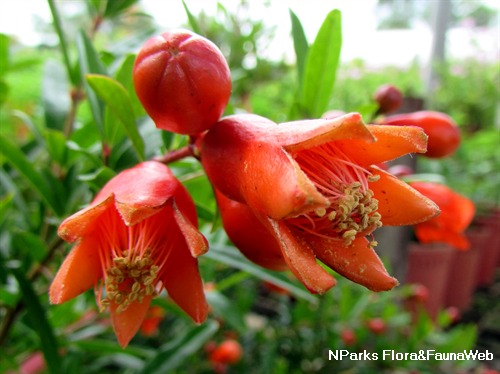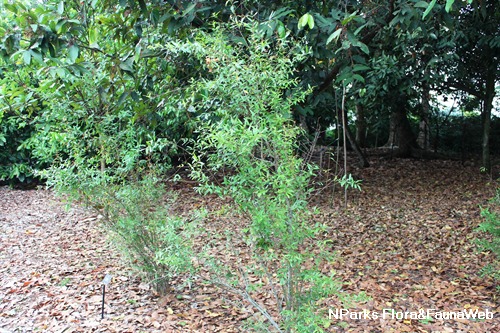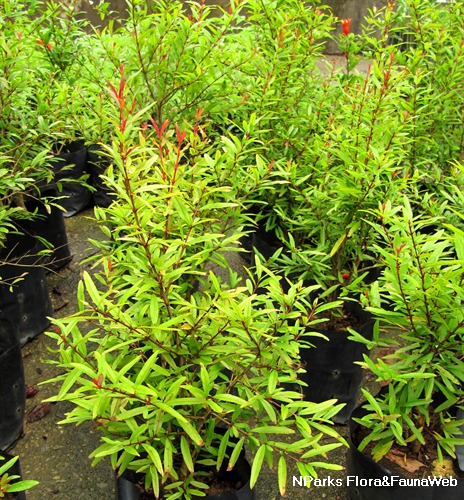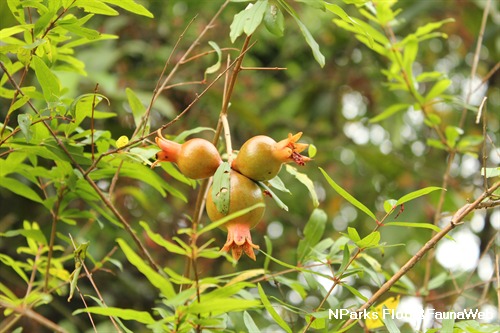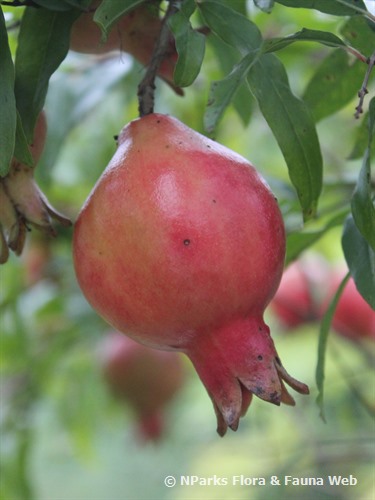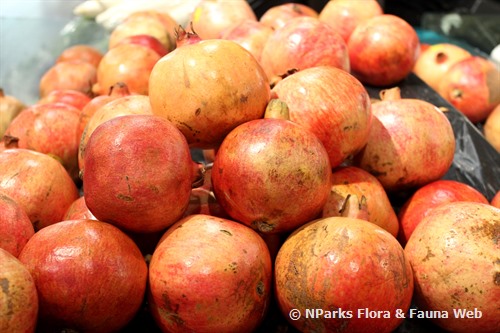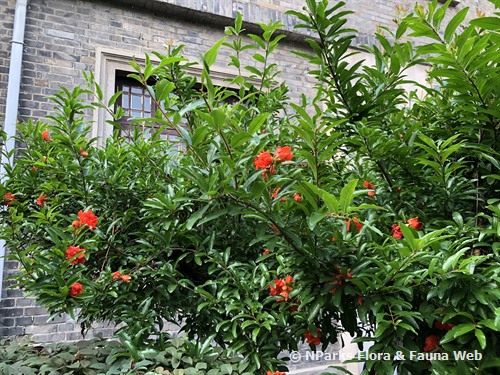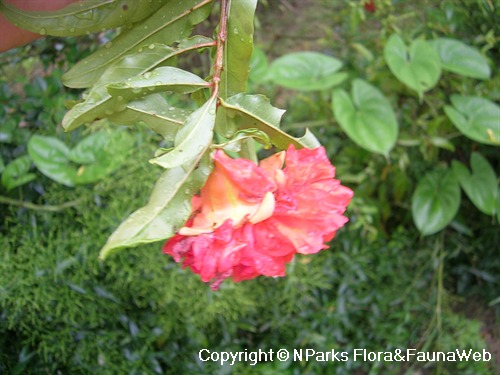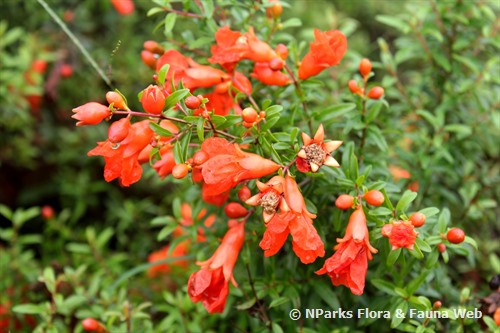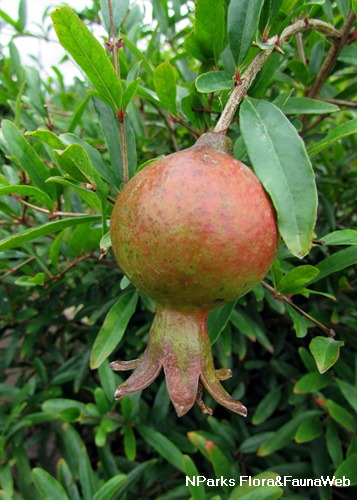
Name
Classifications and Characteristics
| Plant Division | Angiosperms (Flowering Seed Plants) (Dicotyledon) |
|---|---|
| Plant Growth Form | Shrub, Tree (Small (6m-15m)) |
| Lifespan (in Singapore) | Perennial |
| Mode of Nutrition | Autotrophic |
| Maximum Height | 6 m |
Biogeography
| Native Distribution | Iran, Afghanistan, Himalayas |
|---|---|
| Native Habitat | Terrestrial |
| Preferred Climate Zone | Tropical, Sub-Tropical / Monsoonal |
| Local Conservation Status | Non-native |
Description and Ethnobotany
| Growth Form | Large shrub or small tree, often multi-stemmed and has a bushy growth habit, growing up to 2 to 3m tall. It is deciduous in temperate climates and evergreen in tropical climates. |
|---|---|
| Foliage | Leaves (1-9 cm long, 0.5-2.5 cm wide) are oblong-lanceolate (elongated to lance-shaped) with smooth leaf edges. Leaves are typically paired (opposite leaf arrangement), but can also be subopposite (almost paired, but slightly offset) or clustered. |
| Flowers | The flowers are red in colour and are located in the leaf axils towards the upper part of the stems. The flower calyx is thick and leathery with 5 to 7 sepals, and with the same number of petals. Each flower has numerous stamens, inserted in the calyx-tube, and a singular stigma. |
| Fruit | The fruits are berries, red-brown in colour when ripe, and are spherical and leathery in shape, up to 12cm across. The fruit is divided into compartments via yellowish membranes, and the seeds are encased in a juicy, edible pulp. |
| Cultivation | It is best grown under full sun, in well-drained, fertile soil. |
| Etymology | Genus Punica meaning "many-seeded apple". Species gratum meaning "pleasing" or "agreeable". |
| Ethnobotanical Uses | Edible Plant Parts : Edible Fruits Food (Fruit or Vegetable): The fruits are edible and can be eaten raw. The pulp from the seeds is used to make juice, jellies and syrups. Medicinal: In Asian folk medicine, the bark on the branches and roots is used to treat tapeworms and other intestinal worms. |
Landscaping Features
| Desirable Plant Features | Ornamental Flowers |
|---|---|
| Landscape Uses | Coastal, Container Planting |
| Thematic Landscaping | Economic Garden |
Plant Care and Propagation
| Light Preference | Semi-Shade, Full Sun |
|---|---|
| Water Preference | Moderate Water |
| Plant Growth Rate | Fast to Moderate |
| Rootzone Tolerance | Well-Drained Soils, Fertile Loamy Soils |
| Propagation Method | Seed, Stem Cutting |
Foliar
| Mature Foliage Colour(s) | Green |
|---|---|
| Mature Foliage Texture(s) | Glossy / Shiny, Leathery |
| Leaf Area Index (LAI) for Green Plot Ratio | 4.5 (Shrub & Groundcover - Dicot) |
Floral (Angiosperm)
| Flower & Plant Sexuality | Bisexual Flowers |
| Flower Colour(s) | Red, Yellow / Golden |
|---|---|
| Flower Grouping | Solitary, Cluster / Inflorescence |
| Flower Location | Axillary |
| Flower Symmetry | Radial |
Fruit, Seed and Spore
| Mature Fruit Colour(s) | Red |
|---|---|
| Fruit Classification | Simple Fruit |
| Fruit Type | Fleshy Fruit , Non-Accessory Fruit |
References
| References | Verheij, E.W.M., Coronel, R.E.. 1992. Plant Resources of South-East Asia No 2. Edible Fruits and Nuts. Indonesia: Backhuys Publishers. 447 pp. |
|---|
Image Repository
Others
| Master ID | 1085 |
|---|---|
| Species ID | 2378 |
| Flora Disclaimer | The information in this website has been compiled from reliable sources, such as reference works on medicinal plants. It is not a substitute for medical advice or treatment and NParks does not purport to provide any medical advice. Readers should always consult his/her physician before using or consuming a plant for medicinal purposes. |

